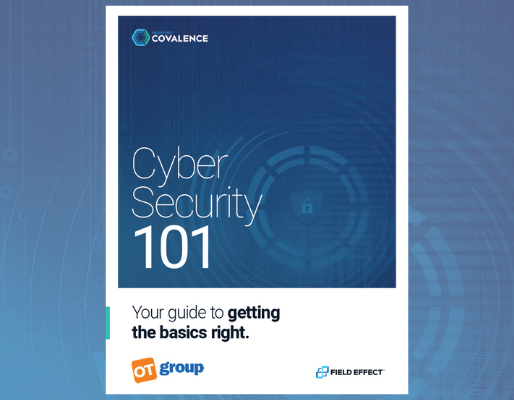Most organizations in Ontario, Canada, are familiar by now with the core advantages of cloud computing, particularly when it comes to how this technology can benefit a remote workforce.
In fact, in a recent blog titled ‘5 Ways Remote Workers Benefit From Cloud-Based Technology’, we listed some of the key advantages of cloud computing - such as greater accessibility, more affordable infrastructure and maintenance costs, the ability to scale up or down at a moment’s notice and improved collaboration between remote workers.
Despite the benefits, however, making the transition to the cloud isn’t as simple as setting up a subscription and letting your employees dive right in. It’s important that organizations recognize the challenges that come with cloud migration, and cybersecurity is a priority.
What are the top security challenges associated with cloud computing?
According to the 2019 Cloud Security Report sponsored by ISC, 93 percent of cybersecurity professionals are either “extremely or moderately” concerned about cloud security. In fact, nearly 30 percent of respondents said they experienced a public cloud-related incident in the past 12 months.
The report found:
- The top cloud security concern of cybersecurity professionals is data loss and leakage (64 percent).
- Unauthorized access through misuse of employee credentials and improper access
controls (42 percent) takes the number one spot in this year’s survey as the single biggest perceived vulnerability to cloud security, tied with insecure interfaces and APIs (42 percent). This is followed by misconfiguration of the cloud platform (40 percent). - The top two operational security headaches SOC teams are struggling with are compliance (34 percent) and lack of visibility into cloud security (33 percent).
There’s a reason many organizations are concerned about cloud security. According to the 2019 Cost of a Data Breach Report by the Ponemon Institute and IBM, the average cost of a data breach is now $3.92 million.
Thankfully there are plenty of security measures that your organization can implement to mitigate and prevent the impact of a data breach. The first step to improved cloud cybersecurity is understanding the risks, and the second is action.
First things first, your business must be aware of the shared responsibility model
To know exactly what you need to do to secure your cloud infrastructure, it’s first important to understand that when you’re using the cloud you are using the shared responsibility model.
The shared responsibility model simply means the cloud provider is responsible for the security of its cloud infrastructure, but that your organization is responsible for the security of the data that it stores within the cloud.
Just as you would be responsible for the data stored on a physical piece of hardware or software, you are also responsible for the security of any data stored within the cloud.
Five security factors to consider when making the transition to cloud computing
As your organization’s workload migrates to multiple cloud providers, it’s important that you build a cybersecurity plan. Through the implementation of cybersecurity measures you can be confident that the data you store within the cloud is safe from the hands of cybercriminals.
So, what security factors do you need to consider when transitioning over to cloud-based systems? OT Group has listed the top four considerations here:
1 - Limit data access where possible
Limiting the number of people that have access to specific data will significantly decrease the chance of a cyberattack. The less people who have access, the less entry points a cybercriminal has to your data. Use role-based access control to reduce and manage the number of people who have access to sensitive information. Authorize access to this data to the individuals that truly need to use it.
2 - Data encryption
Cloud service providers typically offer encryption services, which is the process of scrambling readable texts so it can only be read by users who have a decryption code. Data is particularly vulnerable to cyber attacks when being moved. As a result, you’ll want to encrypt your data while your company is transitioning over to the cloud.
Meanwhile, ensuring that your cloud service provider encrypts data while it’s resting will give your organization an extra layer of protection that will significantly reduce risk of data loss and other cybercrimes.
3 - Backup and disaster recovery
Business continuity is crucial to the success of your organization. Creating a backup and disaster recovery plan will help build resilience into your business model. If you do suffer from a data breach and data is stolen, your business will still be able to continue operating instead of suffering from a complete shutdown.
4 - Invest in employee training
Cloud-based systems are generally more secure than traditional on-premise solutions, particularly if you have followed the advice above. Despite that, the biggest security risks to your organization is still its employees.
Investing money into employee training will ensure your company’s employees are able to avoid costly mistakes. Train them how to securely and effectively use your cloud-based systems, and make sure they know the warning signs of an attack - such as identifying phishing scams.
Want to learn more about securing your data on the cloud? Contact OT Group today. Our team of technology experts are more than happy to answer any questions that you may have in regards to protecting your data from the damaging effects of cybercrime.



.png)

